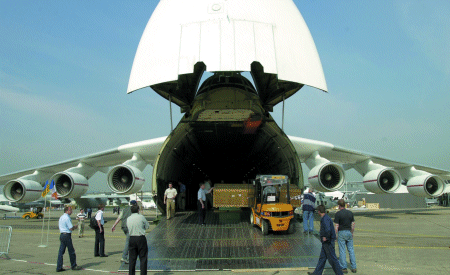Antonov's 600t An-225 Mriya freighter made its second appearance at Le Bourget, having first appeared at the show in 1989.
The only operable example of the world's largest aircraft was restored to airworthy condition earlier this year, after seven years in storage. It required $20 million and seven months of work, says the Ukrainian company.

Since 7 May, when flying resumed, the aircraft has performed 20 sorties and achieved its airworthiness approvals last month. Since its maiden flight in December 1988, the Mriya has logged 359 flights. Yuri Pakhomov, a test engineer with Antonov, says the aircraft will continue flying in June and July and then undergo maintenance and removal of test equipment ahead of entering commercial service with Antonov Airlines in October.
During restoration, the aircraft was fitted with six ZMKB Progress D-18T Series 3 engines provided by Motor-Sich. It also received several avionics updates, including a SM3301 dual GPS receiver.
The revival of the Mriya, with its ability to carry a 250t payload, is an attempt to tap into rising demand for carriage of spacecraft and industrial turbines. Antonov says that a second Mriya, work on which was halted in 1994, can be assembled if the market justifies it.
Antonov Airlines rival Volga-Dnepr emphasised the opportunity for increasing space industry work with a joint display at the show, linking with the Khrunichev space centre as part of an alliance.
The two companies say the aim of the tie-up is to reduce the costs of launch services by means of more efficient transportation of space hardware between the manufacturing site and launch pad.
Volga-Dnepr general director Aleksei Isaikin believes that the An-124 Ruslan's cargo capabilities are being increasingly recognised by industry. Space equipment and aircraft components account for nearly 30% of Ruslan's workload.
Khrunichev developed its Angara lightweight launch vehicle and new-generation satellites with the Ruslan's transport capabilities in view. The manufacturer and the airline are working together on tooling and equipment intended for transportation of the space hardware, so as to avoid the disassembly-and-assembly cycle.
Source: Flight International
















